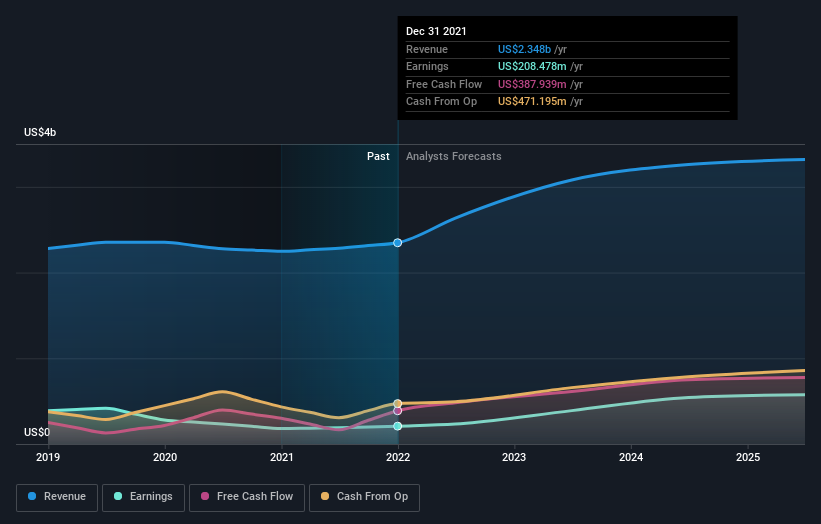- Australia
- /
- Professional Services
- /
- ASX:CPU
What Does Computershare Limited's (ASX:CPU) Share Price Indicate?

Computershare Limited (ASX:CPU) received a lot of attention from a substantial price movement on the ASX over the last few months, increasing to AU$25.75 at one point, and dropping to the lows of AU$22.77. Some share price movements can give investors a better opportunity to enter into the stock, and potentially buy at a lower price. A question to answer is whether Computershare's current trading price of AU$24.45 reflective of the actual value of the large-cap? Or is it currently undervalued, providing us with the opportunity to buy? Let’s take a look at Computershare’s outlook and value based on the most recent financial data to see if there are any catalysts for a price change.
Check out our latest analysis for Computershare
What is Computershare worth?
Computershare is currently expensive based on my price multiple model, where I look at the company's price-to-earnings ratio in comparison to the industry average. In this instance, I’ve used the price-to-earnings (PE) ratio given that there is not enough information to reliably forecast the stock’s cash flows. I find that Computershare’s ratio of 47.98x is above its peer average of 25.99x, which suggests the stock is trading at a higher price compared to the IT industry. Another thing to keep in mind is that Computershare’s share price is quite stable relative to the rest of the market, as indicated by its low beta. This means that if you believe the current share price should move towards the levels of its industry peers over time, a low beta could suggest it is not likely to reach that level anytime soon, and once it’s there, it may be hard for it to fall back down into an attractive buying range again.
What does the future of Computershare look like?

Future outlook is an important aspect when you’re looking at buying a stock, especially if you are an investor looking for growth in your portfolio. Although value investors would argue that it’s the intrinsic value relative to the price that matter the most, a more compelling investment thesis would be high growth potential at a cheap price. Computershare's earnings over the next few years are expected to double, indicating a very optimistic future ahead. This should lead to stronger cash flows, feeding into a higher share value.
What this means for you:
Are you a shareholder? CPU’s optimistic future growth appears to have been factored into the current share price, with shares trading above industry price multiples. However, this brings up another question – is now the right time to sell? If you believe CPU should trade below its current price, selling high and buying it back up again when its price falls towards the industry PE ratio can be profitable. But before you make this decision, take a look at whether its fundamentals have changed.
Are you a potential investor? If you’ve been keeping an eye on CPU for a while, now may not be the best time to enter into the stock. The price has surpassed its industry peers, which means it is likely that there is no more upside from mispricing. However, the optimistic prospect is encouraging for CPU, which means it’s worth diving deeper into other factors in order to take advantage of the next price drop.
Keep in mind, when it comes to analysing a stock it's worth noting the risks involved. For example, we've discovered 1 warning sign that you should run your eye over to get a better picture of Computershare.
If you are no longer interested in Computershare, you can use our free platform to see our list of over 50 other stocks with a high growth potential.
New: AI Stock Screener & Alerts
Our new AI Stock Screener scans the market every day to uncover opportunities.
• Dividend Powerhouses (3%+ Yield)
• Undervalued Small Caps with Insider Buying
• High growth Tech and AI Companies
Or build your own from over 50 metrics.
Have feedback on this article? Concerned about the content? Get in touch with us directly. Alternatively, email editorial-team (at) simplywallst.com.
This article by Simply Wall St is general in nature. We provide commentary based on historical data and analyst forecasts only using an unbiased methodology and our articles are not intended to be financial advice. It does not constitute a recommendation to buy or sell any stock, and does not take account of your objectives, or your financial situation. We aim to bring you long-term focused analysis driven by fundamental data. Note that our analysis may not factor in the latest price-sensitive company announcements or qualitative material. Simply Wall St has no position in any stocks mentioned.
About ASX:CPU
Computershare
Provides issuer, employee share plans and voucher, communication and utilities, technology, and mortgage and property rental services.
Excellent balance sheet with acceptable track record.
Similar Companies
Market Insights
Community Narratives




